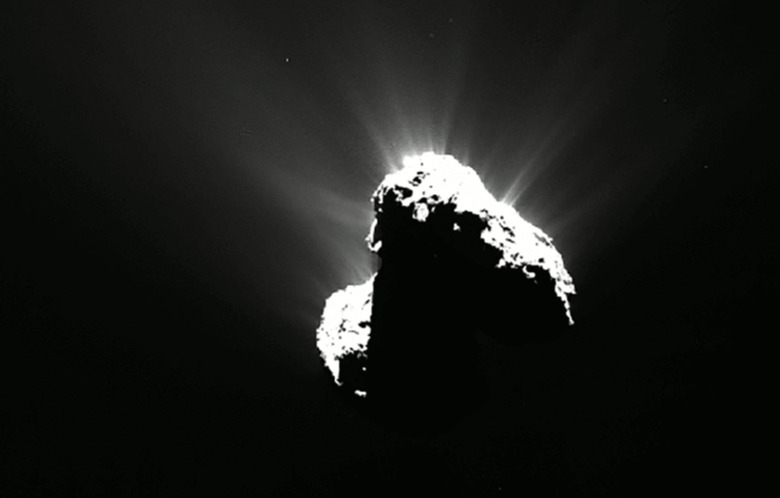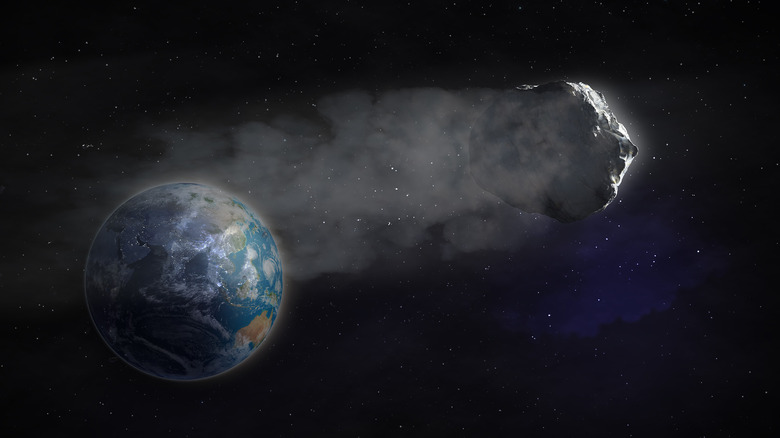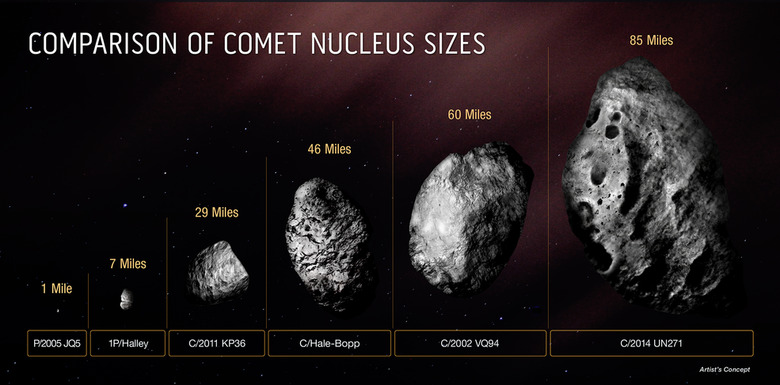A Comet Twice As Big As Mount Everest Is Headed Past Earth Soon
A massive comet is heading towards Earth and the inner solar system. Comet C/2017 K2 (PanSTARRS) doesn't pose a threat to Earth itself, but the massive comet will be a treat for sky watchers.
A massive comet from the Oort Cloud is heading toward Earth
C/2017 K2 (PanSTARRS) will make its closest approach to Earth on July 14, 2022. Astronomers aren't positive how close the comet will come, but we do know it won't pose any danger to our planet. The comet was first discovered heading towards Earth and the inner solar system in 2017 using the Pan-STARRS survey instrument in Hawaii.
When it was first discovered, C/2017 K2 (PanSTARRS) was hurtling somewhere between Saturn and Uranus. Now, though, the comet is continuing its trek from the Oort Cloud towards Earth and the inner solar system. When it approaches our planet, you'll be able to see the comet using a small telescope. That's because the comet, which is twice the size of Mount Everest, is bright and active.
When a comet is active, it is bright enough to be detectable from Earth. However, an active comet relies on energy from the Sun to heat up gases, creating what we know as the coma and tail of the comet. Because this comet is heading towards Earth from the Oort Cloud, though, it's unclear how it has remained active for so long.
Not the biggest comet we’ve ever seen
Despite being absolutely massive, C/2017 K2 (PanSTARRS) is not the largest comet we've ever seen. Nor is it the furthest active. Those titles now fall to C/2014 UN271, another massive comet heading towards Earth and our inner solar system from the Oort Cloud. Like C/2017 K2 (PanSTARRS), C/2014 UN271's activity remains a mystery.
Is there something that we don't know about beyond the Oort Cloud or possibly within it? That's unclear. In fact, there's so much we don't know about the Oort Cloud because it lies at the outer edge of our solar system. As such, it's mostly a theory that it even exists. For context, Voyager 1 has explored further than any other man-made spacecraft, and it will take another 300 years for it to reach the Oort Cloud.
From there, though, scientists believe it would take another 30,000 years to make it through the Oort Cloud. While the comet heading towards Earth and the inner solar system poses no threat to humanity, it would be nice to be able to study these celestial entities a bit more. Perhaps, with the right research, we could learn more about the Oort Cloud, and even the ancient universe.


